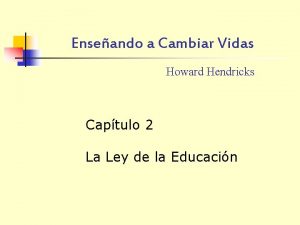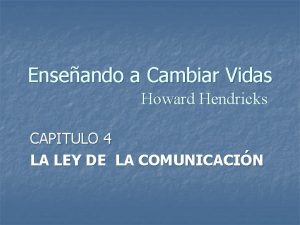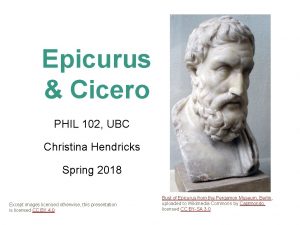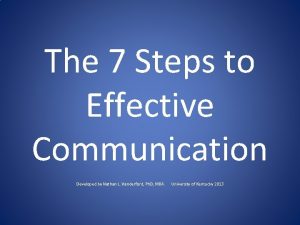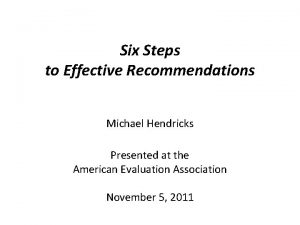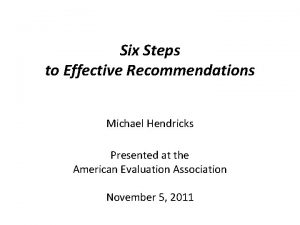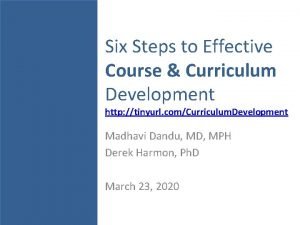Six Steps to Effective Recommendations Michael Hendricks Presented










- Slides: 10

Six Steps to Effective Recommendations Michael Hendricks Presented at the American Evaluation Association November 5, 2011

Recommendations Are Incredibly Important for Evaluators • Typically, what our audiences focus on the most • Often have the most impact on the programs we evaluate • They also affect how we evaluators as a group are viewed; affects our group reputation • Yet we spend too little time and effort on them (“they flow automatically from our conclusions”) • Nor is there much training on this topic • Even AEA is dropping the ball

What Works for Me Olympic We need to invest much more effort here Think process, not product – this is key Structured – I suggest six (6) steps Iterative – good writers go through many drafts Collaborative – we can work closely with stakeholders without being co-opted; think of an Olympic ice skater’s coach • Attitude matters – aim for group success, not personal glory • • •

Step 1: Plan for recommendations from the beginning Find out when recommendations are needed Build time for recommendations into your workplan Identify the key decision makers, by name Realize that defensiveness is a natural human trait Define what you mean by a “successful” recommendation (Accepted? Considered seriously? ) • Strive to be a humble, open, trustworthy person • Design a high-credibility evaluation • • •

Step 2: Develop ideas as the evaluation starts • Begin to think about recommendations much earlier • Learn the program’s history, constraints, etc. • Brainstorm ideas (“candidate recommendations“) about 10% of the way into the evaluation • Consider all aspects of the program fair game • Cast a wide net for ideas • Get stakeholders to suggest ideas (group, separately)

Step 3: Analyze each candidate idea • Analyze each idea yourself (pros, cons, barriers, value premises, $ implications, piloting, etc. ) • Deliberately try to counter each idea • Get colleagues to react • Run ideas by stakeholders informally • Select those ideas that pass these filters

Step 4: Turn surviving ideas into recommendations • Recommendations, options, hybrid? • Specific, general, combination? • Wordsmith carefully – targeted, clear, concise, positive tone, monitorable, etc. • Get slightly more formal feedback from stakeholders about these draft recommendations • Try to avoid being restricted to a certain number

Step 5: Offer your final recommendations • Tailor a “marketing plan” for each audience • Follow some generally useful guidelines: -- Tie each recommendation to your finding(s) -- Place them carefully in any written report -- Categorize the recommendations (audiences, types of action, importance, chronology, etc. ) -- Discuss them in a personal briefing -- Look for additional ways to offer them -- Etc.

Step 6: Try to follow-up in various ways • Re-visit your early definition of success • Talk in-depth with your audiences (after the briefing) • Get a response to each recommendation (enter into database or other tracking system? ) • Help to implement recommendations (sometimes) • Help to monitor the implementation • Watch for opportunities to offer an unaccepted recommendation again

Good luck!




